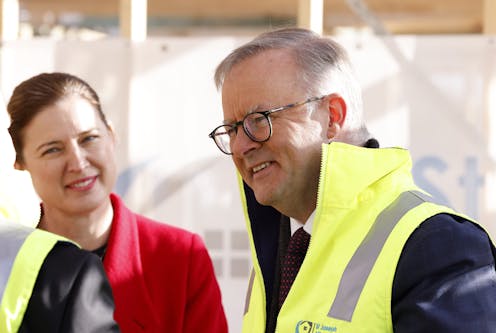Albanese government tackles housing crisis on 3 fronts, but there's still more to do
- Written by Hal Pawson, Professor of Housing Research and Policy, and Associate Director, City Futures Research Centre, UNSW Sydney

The Albanese government’s housing package moved a step closer to delivery with the recent release of draft legislation[1]. The bills are expected to be tabled in parliament soon. After a decade of general federal disengagement[2] from housing policy (first home ownership being the main exception), this is more than welcome.
At the same time, the proposed laws don’t give enough priority to the need for a coherent approach to a complex housing system. Multi-faceted problems such as homelessness[3], unaffordable rents[4], mortgage stress[5] and a lack of social housing[6] demand joined-up solutions. Housing knowledge and policy-making capacity within government have been badly eroded and must be restored.
The draft legislative package comprised three bills (and a helpful explanatory memorandum[7]):
National Housing Supply and Affordability Council Bill
Housing Australia Future Fund Bill
Treasury Laws Amendment (Housing Measures) Bill.
Beyond this, the National Housing and Homelessness Plan[8] now being developed by the government should provide the vital strategic framework that has been so glaringly absent. This means it could be even more important than the measures in the draft bills. Arguably, the plan should also be enshrined in law.
Read more: Homeless numbers have jumped since COVID housing efforts ended – and the problem is spreading beyond the big cities[9]
What’s good about the package?
In our submission[10] on the draft package, we commend the progress towards reasserting Commonwealth leadership on housing. State and territory commitments and actions are vital, too, in confronting Australia’s mounting and complex housing challenges. But federal engagement and ambition are essential to make any significant and lasting progress.
The National Housing Supply and Affordability Council[11] promises to restore the foundation for evidence-based policy once provided by the former National Housing Supply Council.
Similarly, after more than ten years of negligible investment[12] in new social and affordable housing, the $10 billion[13] Housing Australia Future Fund is certainly a laudable commitment. However, the aim of building 30,000 new social and affordable housing units over five years is relatively modest. We estimate current unmet need for social housing equates to 437,000 households[14].
The recent National Housing Accord[15] on expanded construction output could also play a meaningful role. Full details are yet to be released.













